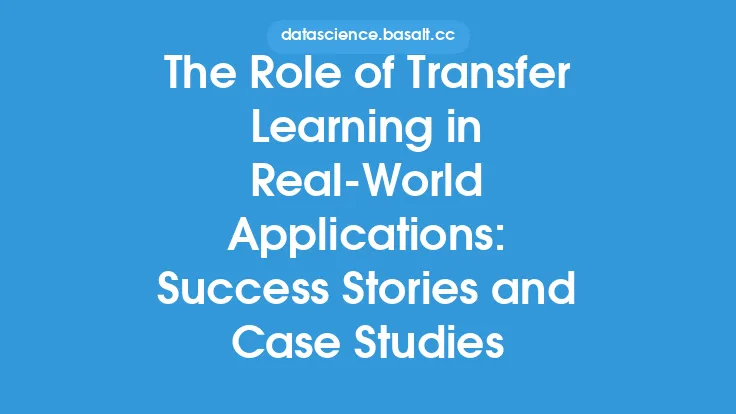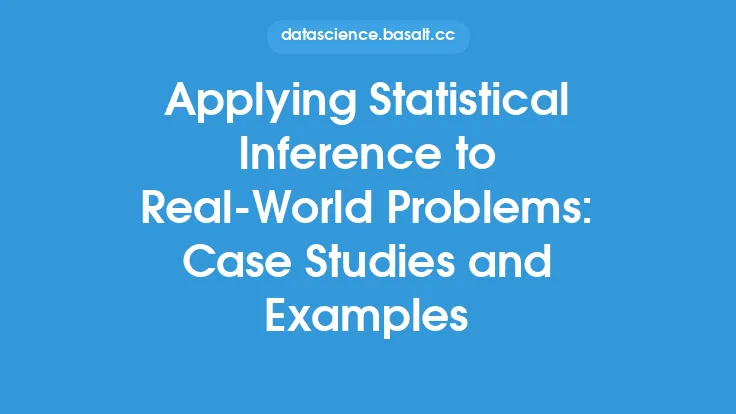Supervised learning is a fundamental concept in machine learning, where an algorithm is trained on labeled data to make predictions on new, unseen data. The applications of supervised learning are vast and diverse, with numerous success stories and case studies across various industries. In this article, we will delve into the real-world applications of supervised learning, exploring its uses, benefits, and impact on different fields.
Introduction to Real-World Applications
Supervised learning has been successfully applied in various domains, including image and speech recognition, natural language processing, medical diagnosis, and financial forecasting. The key to its success lies in its ability to learn from labeled data and make accurate predictions on new data. This has led to the development of numerous applications, such as image classification, sentiment analysis, and recommender systems. For instance, supervised learning is used in self-driving cars to recognize objects, such as pedestrians, traffic lights, and road signs, and to make decisions based on that recognition.
Image and Speech Recognition
One of the most significant applications of supervised learning is in image and speech recognition. Deep learning algorithms, such as convolutional neural networks (CNNs) and recurrent neural networks (RNNs), are trained on large datasets of images and speech signals to recognize patterns and make predictions. For example, Google's image recognition system uses supervised learning to identify objects in images and classify them into different categories. Similarly, speech recognition systems, such as Siri and Alexa, use supervised learning to recognize spoken words and respond accordingly. The technical aspect of image recognition involves the use of techniques such as data augmentation, transfer learning, and batch normalization to improve the accuracy of the model.
Natural Language Processing
Supervised learning is also widely used in natural language processing (NLP) applications, such as sentiment analysis, text classification, and language translation. For instance, supervised learning algorithms can be trained on labeled datasets to classify text as positive, negative, or neutral, allowing companies to analyze customer feedback and sentiment. Additionally, language translation systems, such as Google Translate, use supervised learning to learn the patterns and relationships between languages and translate text accurately. The technical aspect of NLP involves the use of techniques such as tokenization, stemming, and lemmatization to preprocess the text data and improve the accuracy of the model.
Medical Diagnosis and Healthcare
Supervised learning has numerous applications in medical diagnosis and healthcare, including disease diagnosis, patient outcome prediction, and personalized medicine. For example, supervised learning algorithms can be trained on medical images, such as X-rays and MRIs, to diagnose diseases, such as cancer and diabetes. Additionally, supervised learning can be used to predict patient outcomes, such as the likelihood of readmission or the response to treatment. The technical aspect of medical diagnosis involves the use of techniques such as feature extraction, dimensionality reduction, and model selection to improve the accuracy of the model.
Financial Forecasting and Trading
Supervised learning is also used in financial forecasting and trading, including stock price prediction, credit risk assessment, and portfolio optimization. For instance, supervised learning algorithms can be trained on historical stock prices and other market data to predict future stock prices and make investment decisions. Additionally, supervised learning can be used to assess credit risk and predict the likelihood of loan default. The technical aspect of financial forecasting involves the use of techniques such as time series analysis, regression analysis, and model selection to improve the accuracy of the model.
Recommender Systems and Personalization
Supervised learning is used in recommender systems and personalization applications, including product recommendation, content recommendation, and personalized advertising. For example, supervised learning algorithms can be trained on user behavior and preference data to recommend products and content that are likely to be of interest. Additionally, supervised learning can be used to personalize advertising and marketing campaigns, increasing their effectiveness and relevance. The technical aspect of recommender systems involves the use of techniques such as collaborative filtering, content-based filtering, and hybrid approaches to improve the accuracy of the model.
Success Stories and Case Studies
There are numerous success stories and case studies that demonstrate the effectiveness of supervised learning in real-world applications. For example, Netflix uses supervised learning to recommend movies and TV shows to its users, increasing user engagement and retention. Additionally, Amazon uses supervised learning to recommend products and personalize the shopping experience, increasing sales and customer satisfaction. Other companies, such as Google, Facebook, and Microsoft, also use supervised learning in various applications, including image and speech recognition, natural language processing, and recommender systems.
Challenges and Limitations
While supervised learning has numerous applications and success stories, it also has several challenges and limitations. One of the main challenges is the need for large amounts of labeled data, which can be time-consuming and expensive to obtain. Additionally, supervised learning algorithms can be sensitive to noise and outliers in the data, which can affect their accuracy and performance. Furthermore, supervised learning algorithms can be prone to overfitting, especially when the dataset is small or the model is complex. The technical aspect of addressing these challenges involves the use of techniques such as data augmentation, regularization, and early stopping to improve the robustness and generalizability of the model.
Future Directions and Opportunities
Despite the challenges and limitations, supervised learning continues to be a rapidly evolving field, with numerous future directions and opportunities. One of the main areas of research is the development of new algorithms and techniques, such as deep learning and transfer learning, which can improve the accuracy and efficiency of supervised learning models. Additionally, there is a growing interest in applying supervised learning to new domains, such as healthcare and finance, where it can have a significant impact on decision-making and outcomes. The technical aspect of future directions involves the use of techniques such as ensemble methods, gradient boosting, and neural architecture search to improve the performance and scalability of supervised learning models.
Conclusion
In conclusion, supervised learning is a powerful and versatile technique that has numerous real-world applications and success stories. From image and speech recognition to natural language processing and medical diagnosis, supervised learning has the potential to transform industries and improve decision-making. While there are challenges and limitations, the future directions and opportunities for supervised learning are vast and exciting, with ongoing research and development in new algorithms, techniques, and applications. As the field continues to evolve, we can expect to see even more innovative and impactful applications of supervised learning in the years to come.





